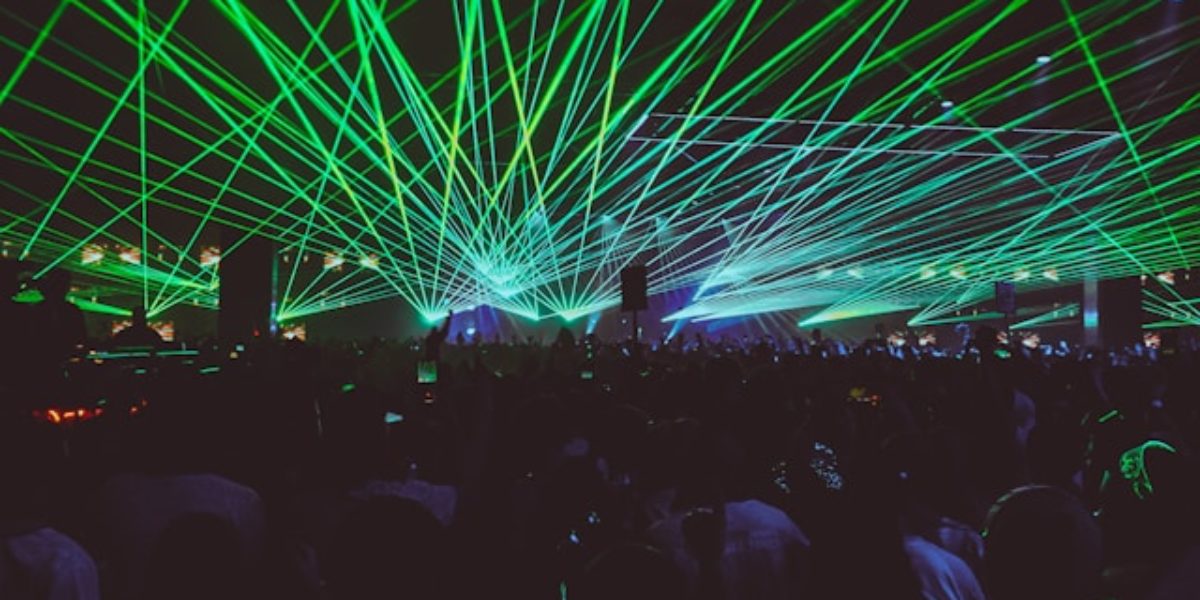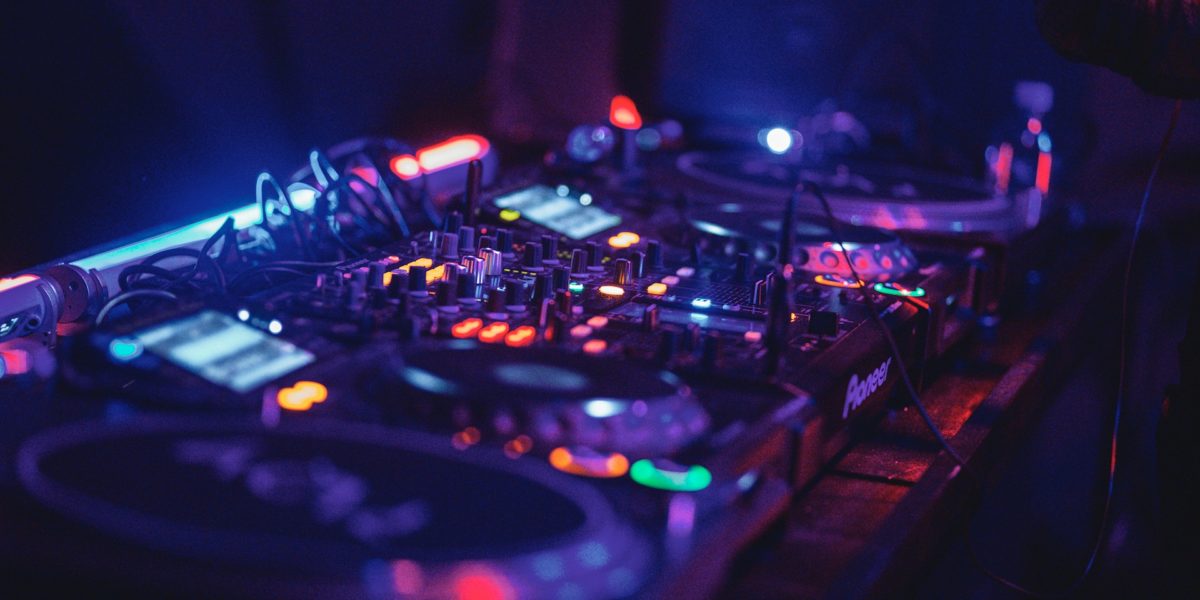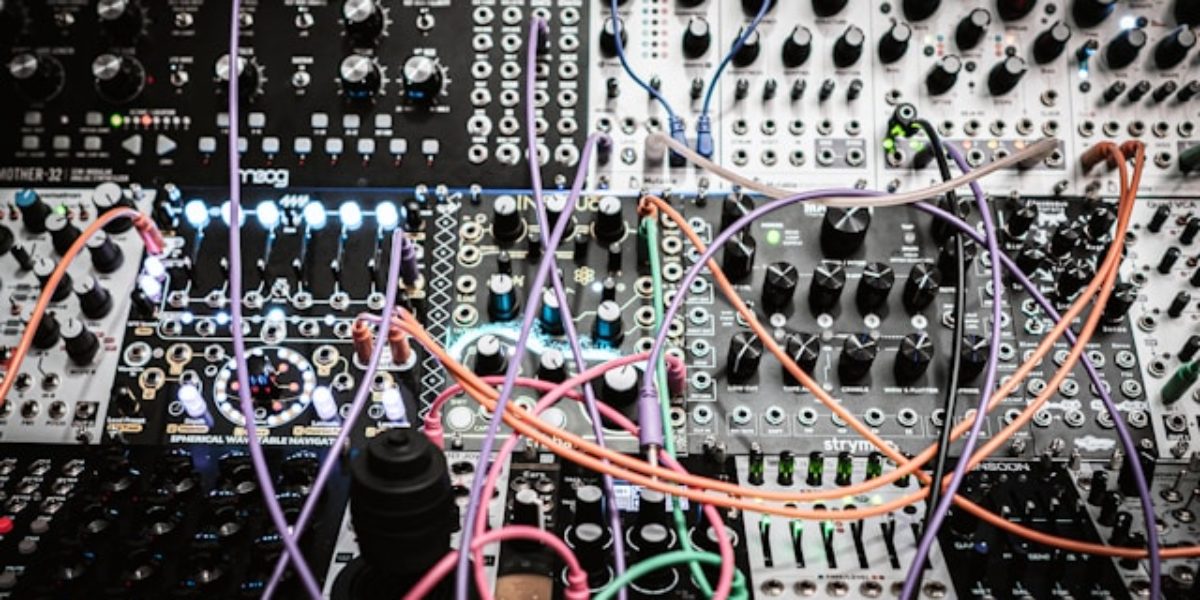Liberation is ingrained in electronic dance music. It’s crafted to make you dance freely. The pulsating four-on-the-floor beat induces a trance that makes you forget all your week’s worries and life’s burdens. It’s an embodied experience. Drums and rhythm have always been the ritual tools of dance, and that remains true in our time, albeit now generated through electricity.
The story of emancipation begins with disco in the 1970s. Initially, members of the LGBTIQ+ community, as well as the Black and Latino communities in New York, danced away their troubles on weekends to soul music with a pumping beat. As disco became more mainstream and eventually scorned and ridiculed by the general public, the genre faded from the spotlight. In Chicago, a new genre emerged, blending European disco with gospel influences and utilizing synthesizers and drum computers: house music, named after The Warehouse, where this music first played. In Detroit, house transformed into techno. The gospel gave way to raw, futuristic space sounds that opened vistas toward a liberating technological future. House and techno remained marginal music movements in the 1980s in the United States, but across the ocean, they gradually became leading phenomena. Via Ibiza, Manchester, London, and Berlin, house and techno climbed the charts and penetrated the collective consciousness. In the Netherlands, house and techno cautiously gained ground through clubs like Roxy and iT in Amsterdam.
Disco
The word disco comes from the French discothèque. In Paris, nightclub manager Régine Zylberberg had the idea in 1953 to hang coloured lights, lay down a dance floor, and use two turntables instead of a band, allowing continuous music. The Parisian disco was an exclusive venue. In New York, the discotheque became an underground space in the early 1970s where people from the LGBTQI community could dance freely, and Black and Latino people were barred. The music was a mix of soul, R&B, and salsa, enhanced by a pulsating four-on-the-floor beat famously used by drummer Earl Young of the band Harold Melvin and the Blue Notes.
With the opening of the glamorous discotheque Studio 54 in 1977, disco became associated with Hollywood and rock stars. The film Saturday Night Fever, starring John Travolta, catapulted disco into the mainstream, thanks in part to the Bee Gees’ soundtrack. In Europe, disco was also produced, with Italian-German producer Giorgio Moroder being one of the first to use synthesizers in disco, paving the way for new styles.
The 1980’s
In the early 1980s, Republican Ronald Reagan became president in the United States. He immediately began deregulating businesses and cutting social policies. As a result, Wall Street stock prices soared, while in impoverished neighbourhoods, various educational programs, including music classes, were abolished. Countless Black and Latino children lost access to musical instruments and musical training. Additionally, the once-thriving industrial heart of the U.S., particularly Detroit, had fallen into decline. The 1973 oil crisis had hit the ‘Motor City’ hard. Fuel-efficient Japanese cars gained a foothold in the United States, leaving American automakers struggling. It was against this backdrop of decay and austerity that techno music emerged in Detroit. Ironically, it was the Japanese who provided economically disadvantaged Detroit youth with “affordable” electronic instruments. Moreover, abandoned factory sites and buildings served as ideal places to let imagination run free.
In Great Britain, Margaret Thatcher at the helm. She pursued a similar policy to Reagan’s, privatizing many state-owned companies and closing mines, resulting in mass unemployment. Young people bore the brunt of these changes. Empty industrial estates created space for youth to hold illegal parties and dance away their troubles. The Do It Yourself attitude of punk was already widespread in England, making it a logical step toward experimenting with the electronics of house and techno.
House
In the late 1970s, disco music gradually faded from the mainstream. Record labels churned out disco tracks like factories, resulting in an abundance of contrived songs. This oversaturation left the general public wanting. Another factor contributing to disco’s decline was the aversion toward those who created this music. In 1979, radio DJ Steve Dahl organized the infamous “Disco Sucks” event at a baseball stadium in Chicago. Clad in military attire, he detonated a stack of disco records on the field, prompting spectators to rush forward and burn their own vinyl. Interestingly, most of the destroyed records were not disco but rather soul and R&B.
In that same Chicago scene, disco went underground and transformed into house music. DJs like Ron Hardy, Frankie Knuckles in Chicago, but also Larry Levan in New York spun tracks that built upon disco’s foundation but stripped away elaborate orchestrations. Instead, they incorporated synthesizers, drum computers, and gospel-inspired vocals. The clubs where this music played also reflected this approach. Gone were the glitzy trappings. What remained were dance floors, speakers, and tightly packed crowds moving to the beat. The people who started disco had reclaimed their own intimate culture.
Techno
House began to slowly spread in the United States. In Detroit, it transformed into techno. Detroit, besides being an increasingly decaying industrial city, was also a significant center for Black music. It is the city of Motown, where soul and R&B were produced prolifically, and it’s also the hometown of the Afrofuturist funk band Parliament led by George Clinton. In Detroit, house music became more mechanical, yet it didn’t lose its soul. Technology wasn’t just a means to create music; it also became a theme within the music itself. The escape from societal margins now involved not only electronic ecstasy but also dreams of space, cyborgs, and robots. The music also became more intellectual, radical, and political.
The most renowned pioneers of techno, The Belleville Three (Juan Atkins, Kevin Saunderson, and Derrick May), drew inspiration from books like Future Shock and The Third Way. The collective Underground Resistance viewed technology as a means to define oneself and break down barriers between classes and races, aiming to uplift young Black men.
Growth
Initially, house and techno remained underground phenomena in their home country, the United States. It was across the ocean, in Great Britain, that these genres would become mainstream. In 1986, the house track “Jack Your Body” by Steve ‘Silk’ Hurley reached the number one spot on the UK Top 40 chart. In cities like Manchester and London, a vibrant scene of clubs and illegal parties emerged in fields and abandoned buildings. These so-called raves grew into a national phenomenon, which was eventually curtailed by the government. In the United Kingdom, new genres also emerged, such as Balearic House influenced by Ibiza and jungle music inspired by reggae and dub. Electronic dance music spread further across Europe from England, but it also made its way back to the United States, where it was perceived by the general public as “white” European music.



